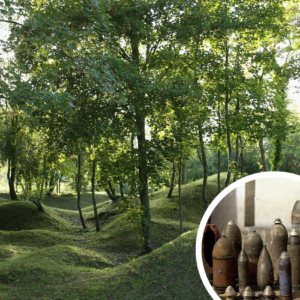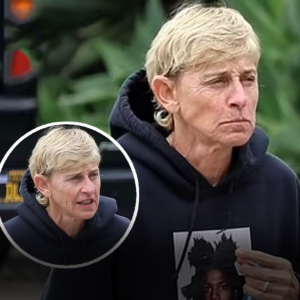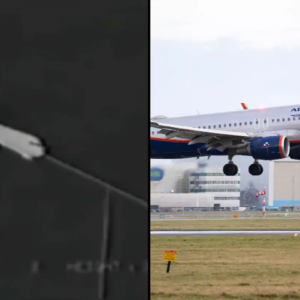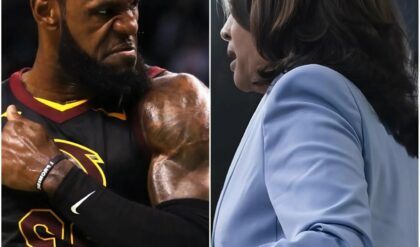Many of the most famous war films that come out of Hollywood focus, in one way or another, on America, and this makes sense, considering how frequently the US has been at war. However, when one looks beyond the American film industry, there are a number of great films which focus on wars in which the US had no official involvement, which can be engaging for those with less familiarity with these conflicts.
No matter what country they originate from, these films often feature powerful performances from their casts, and some are remarkably accurate in their depictions of armed conflict, immersing the viewer in the brutal and ugly world of war. As such, they are potent reminders of just how central war has been to the human experience. To take a break from the parade of movie about US-focused wars, check out these war films about wars that don’t feature the United States at all.
The Killing Fields
Photo: Warner Bros.
The 20th century was marked by a number of brutal conflicts, many of which were civil wars. Few have left as much of a scar as the Cambodian Civil War, which lasted from 1970 to 1975. The Cambodian National army fought against the Communist Party of Kampuchea, better known as the Khmer Rouge. The Khmer Rouge emerged victorious in 1975, leading a brutal regime which carried out the Cambodian Genocide, which involved the deaths of 1.5 to 2 million people and had long-lasting impacts on the politics of Southeast Asia. The 1984 British film The Killing Fields, which shows some of that brutality through the eyes of journalists Sydney Schanberg (Sam Waterston) and Dith Pran (Haing S. Ngor), is necessary viewing for anyone who wants to learn more about this horrendous conflict and its legacy. Though the technical achievement is stunning, the lead performances are the true heart of the film, which sheds light on the horrible toll of the genocide carried out in the Killing Fields.
The Winter War
Photo: National-Filmi
The Winter War (also called the Russo-Finnish War) may not be well known to those outside of Europe, but it was nevertheless an important conflict which erupted when the Soviet Union invaded neighboring Finland in 1939, shortly after the beginning of World War II. Although Finland’s army was tiny in comparison to that of the USSR, the Soviets found the conflict was more than they’d bargained for, and they suffered significant losses before finally attaining the victory which would see Finland ceding some of its territory to the Soviets. The aptly-titled The Winter War, from Finnish director Pekka Parikka, focuses on a Finnish regiment as they struggle to hold back the Soviet invasion, highlighting the extraordinary bravery as these soldiers their homes against the overwhelming odds in the final days of the war.Master and Commander: The Far Side of the World
Photo: 20th Century Fox
Few films have captured the spirit of the epic war film quite as well as Master and Commander: The Far Side of the World. It is based on Patrick O’Brian’s series of novels, set during the Napoleonic Wars. Russell Crowe is perfectly cast as Jack Aubrey, who is a compelling leader as he directs his naval crew to intercept a French frigate. Paul Bettany is also pitch-perfect as the much more introspective ship surgeon, Stephen Maturin. The Napoleonic Wars were a series of conflicts which unfolded over a 20-year period, as the various countries of Europe sought to defeat Napoleon Bonaparte’s French Empire and break his stranglehold on the continent.
The Wind That Shakes The Barley
Photo: Element Pictures
Like all great war films, The Wind That Shakes the Barley manages to situate its central story about two brothers against a wider, bitter conflict, in this case the Irish War of Independence and the subsequent Irish Civil War. Both Pádraic Delaney and Cillian Murphy deliver stunning performances as Teddy and Damien O’Donovan. These two conflicts were key to the history of Ireland and, as the film so potently dramatizes, they often pitted members of a family against one another. The Irish War of Independence lasted from 1919-1921, while the Civil War lasted from 1922-1923. Ultimately, Ireland was divided, with six counties forming Northern Ireland (which stayed part of the United Kingdom) and the remainder ultimately forming the Republic of Ireland (formed in 1949). Ken Loach’s 2006 drama earned international acclaim and became one of the most successful Irish independent films.
The Battle of Algiers
Photo: Allied Artists Pictures
Few films have packed as much of a punch as the 1966 Italian drama The Battle of Algiers, which was directed by Gillo Pontecorvo and focused on the fight by the Algerians against the French colonial forces. The film doesn’t shy away from the ugly nature of the war – particularly highlighting the French and their efforts to regain their colonial possession – and its documentary-style realism is particularly impactful, as is its use of nonprofessional actors. The Algerian War became ever more violent in the years after World War II, and in 1956-1957 the Battle of Algiers erupted around the capital city. Algeria finally achieved independence in 1962. Despite some controversy among French audiences, Pontecorvo’s film was praised by many international critics and audiences, and continues to inspire filmmakers in the modern era – for example, Christopher Nolan, who lists The Battle of Algiers as a major influence on his war film, Dunkirk, for its sympathetic portrayal of the characters without meaningless spectacle.
City of Life and Death
Photo: Media Asia Distribution Group / China Film Group
The Japanese bombing of Pearl Harbor has been widely memorialized in film, but less attention has been paid to the conflict known as the Second Sino-Japanese War, which raged from 1937-1945 (when Japan was defeated in World War II). Though overshadowed by World War II as a whole for residents of other countries, this war was one of the deadliest in history, resulting in the deaths of over 20 million Chinese soldiers and civilians and almost half a million Japanese soldiers. City of Life and Death focuses in particular on the Battle of Nanjing, which took place in 1937 and led to an enormous massacre of Chinese civilians by Japanese forces in the aftermath. Deftly moving between intimate and grand scales, director Lu Chuan weaves together various stories help bring to light one of the most brutal periods in Chinese history, a true testament to the power of cinema to help process the past.
Aguirre, the Wrath of God
Photo: New Yorker Films
German director Werner Herzog might be most famous for his various documentaries, but he also has a number of scripted successes, including his 1972 historical epic Aguirre, the Wrath of God. The film follows Spanish soldier Lope de Aguirre (Klaus Kinski) during the colonization of South America in an attempt to discover the legendary golden city of El Dorado in the Amazon. Like so much of Herzog’s work, this film is a harsh depiction of the greed that drove conquistadors to invade South America, as Aguirre becomes more and more determined to find the mystical city and start his own dynasty, even as his companions die in the harsh conditions around him. Though this story is largely fictionalized, Aguirre was a real man who did indeed participate in the effort to find El Dorado; he was notoriously treacherous, leading rebellions against other conquistadors, and he may have even killed his own daughter.
Red Cliff

Photo: Chengtian Entertainment
John Woo has established a reputation as one of the finest action film directors working today, and his skills and talent are very much on display in the international production Red Cliff. As its title suggests, Red Cliff focuses on the Battle of Red Cliffs, one of the most important events to have occurred near the end of the rule of China’s Han Dynasty in the years 208-209 CE. The Han forces, with leadership from Zhou Yu (played here by Tony Leung) managed to defeat the invading forces of the warlord Cao Cao (Zhang Fengyi). The film dramatizes this conflict in extraordinary detail, with the unabridged version (released in two parts) totaling over four hours in length. Woo manages to keep the action flowing while also not ignoring the historical consequences of the battle.
The Flowers of War
Photo: Wrekin Hall Entertainment
The Second Sino-Japanese War was one of the ugliest and most brutal conflicts in modern Chinese history. It finds full expression in The Flowers of War, which is set during the war’s early days in 1937. Set during and after the Nanjing Massacre, in which Japanese forces killed hundreds of thousands of Chinese civilians, as well as assaulting many women and girls, the story features a variety of characters finding sanctuary together in a church. Among them is John Miller (Christian Bale), an American mortician who attempts to look after a group of innocent schoolgirls. Though it milks the spectacle of war, and the choice to feature an American’s point of view so heavily may be questionable, The Flowers of War nevertheless deserves credit for highlighting the plight of innocent bystanders who were hurt by this devastating attack.
Land and Freedom
Photo: Artificial Eye
Even though the Spanish Civil War (1936-1939) was fought over who would control a single country – with conservative nationalists on one side and a coalition of communists, anarchists, and Republicans on the other – it nevertheless attracted many outside participants. In many ways, it was a proxy conflict, involving many of the powers who would come to play a significant role in the Second World War. Land and Freedom, released in 1995, explores the conflict from the perspective of David Carr (Ian Hart), a young British communist who goes to Spain to join the conflict on the side of the republicans. Shot in a style evocative of documentary, the film highlights the experience of the everyday soldier during a moment of extraordinary social and geopolitical unrest.
War Witch

Photo: Metropole Films
War is already troubling, but watching children thrust into combat is even more horrifying, which is precisely what makes the Canadian film War Witch such a difficult yet necessary film. Its story revolves around a 12-year-old girl named Komona (Rachel Mwanza), who is taken captive and forced to serve a bloodthirsty general named the Great Tiger (Mizinga Mwinga). As a child solder, she is made to commit atrocities, including killing her own parents, before the general comes to believe she is a witch and makes her his concubine. Though the war in the film is itself fictional, Komona’s experience as a child soldier is inspired by real-world events. Director Kim Nguyen’s willingness to explore this fraught issue, as well as the story’s verisimilitude, makes War Witch a film that shakes viewers to the core.
Photo: Metrodome Distribution
The best war films are of those which communicate the emotional experience of armed conflict to the viewer, and few have been as daring or as claustrophobic in that regard as Lebanon. Set during the 1982 Lebanon War, the 2009 film follows several Israeli soldiers as they contend with the ugly life of being inside a tank, with the only view of the outside world coming through the vehicle’s gunsight. Though the confined nature of the film may wear on viewers almost as it does on the soldiers, Lebanon highlights the physical realities of war – as well as the ethical dilemmas, such as when the team of soldiers are ordered to clear out Lebanese civilians using a type of phosphorus grenade that is forbidden by international treaties. The war lasted for several months in 1982, and began when Israel forces began an incursion into southern Lebanon in retaliation for Palestinian Liberation Organization attacks which had originated in the region. Israel and Lebanon signed an agreement to end the war in 1983, though it remains a controversial conflict to this day.
Pathfinder
Photo: 20th Century Fox
Pathfinder is one of those films which has slipped through the cracks, and this is a shame, as despite its pulpy trappings it nevertheless shines light on the largely-forgotten conflict between the Scandinavians and the Indigenous people of North America. The 2007 action film focuses on Ghost (Karl Urban), a Viking adopted by a Native American woman who subsequently fights alongside his people against a new incursion of Vikings. The film obviously takes many liberties with history but the Vikings did lead expeditions to parts of North America in the late 10th and early 11th centuries. It remains unclear why they did not settle permanently, but historians believe armed conflict with Native Americans might have been a contributing factor.
News
The “Red Zone” – Land Still Abandoned Due to the Dangers Left by the First World War
The “Red Zone” – Land Still Abandoned Due to the Dangers Left by the First World War In the aftermath of the First World War, large areas of northeast France were left in ruin. Years of constant siege warfare along…
Before Becoming a Big-Name Actor, Richard Todd was a Paratrooper Who Fought at Pegasus Bridge
Before Becoming a Big-Name Actor, Richard Todd was a Paratrooper Who Fought at Pegasus Bridge Photo Credit: 1. Sgt. Christie, No. 5 Army Film & Photographic Unit / Imperial War Museums / Wikimedia Commons / Public Domain 2. Silver Screen…
The Potsdam Giants: A Prussian Infantry Regiment Of Nothing But Very Tall Soldiers
The Potsdam Giants: A Prussian Infantry Regiment Of Nothing But Very Tall Soldiers Frederick William I inspecting his giant guards known as The Potsdam Giants, a Prussian infantry regiment No 6, composed of taller-than-average soldiers. Frederick William I of Prussia,…
Ellen DeGeneres cuts a very casual figure as she drives around in her Ferrari
Ellen DeGeneres cuts a very casual figure as she drives around Montecito in her Ferrari… while preparing to embark on her stand-up tour Ellen DeGeneres cut a very casual figure as she made her way around Montecito on Tuesday morning. The…
“I’m heavily tattooed and keep getting rejected for jobs – it’s not fair”
Heavily tattooed OnlyFans star, 23, with multiple piercings on her FACE slams TJ Maxx for rejecting her for a job – accusing retailer of unfairly judging her dramatic look A woman has accused TJ Maxx of rejecting her for a…
All 75 passengers killed in plane crash after pilot let his chirldren control the plane
Praying, turning the engine off by accident and letting KIDS play with the controls: The worst blunders made by pilots before a crash revealed Every time we board a plane, we put our lives in the hands of the pilot….
End of content
No more pages to load






















